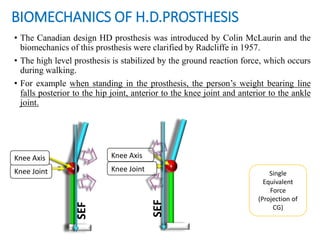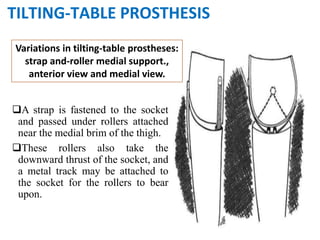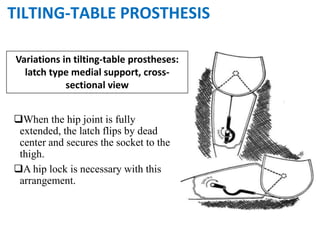This document discusses advances in hip disarticulation prostheses. It begins by describing hip disarticulation amputation and challenges with prosthetic fitting at this level. It then covers the evolution of prosthetic designs including traditional tilting-table models, the seminal Canadian design, and more recent designs incorporating lightweight materials and anatomical shaping. Key components like the socket, hip joint, and suspension methods are examined. The document emphasizes ongoing efforts to improve mobility, comfort and long-term prosthetic use for individuals with hip disarticulation amputations.


















































